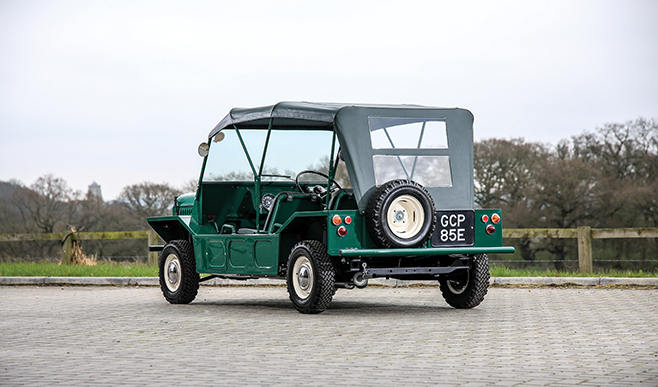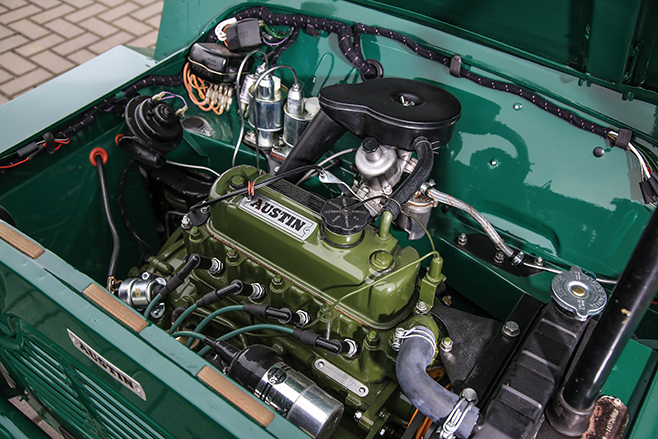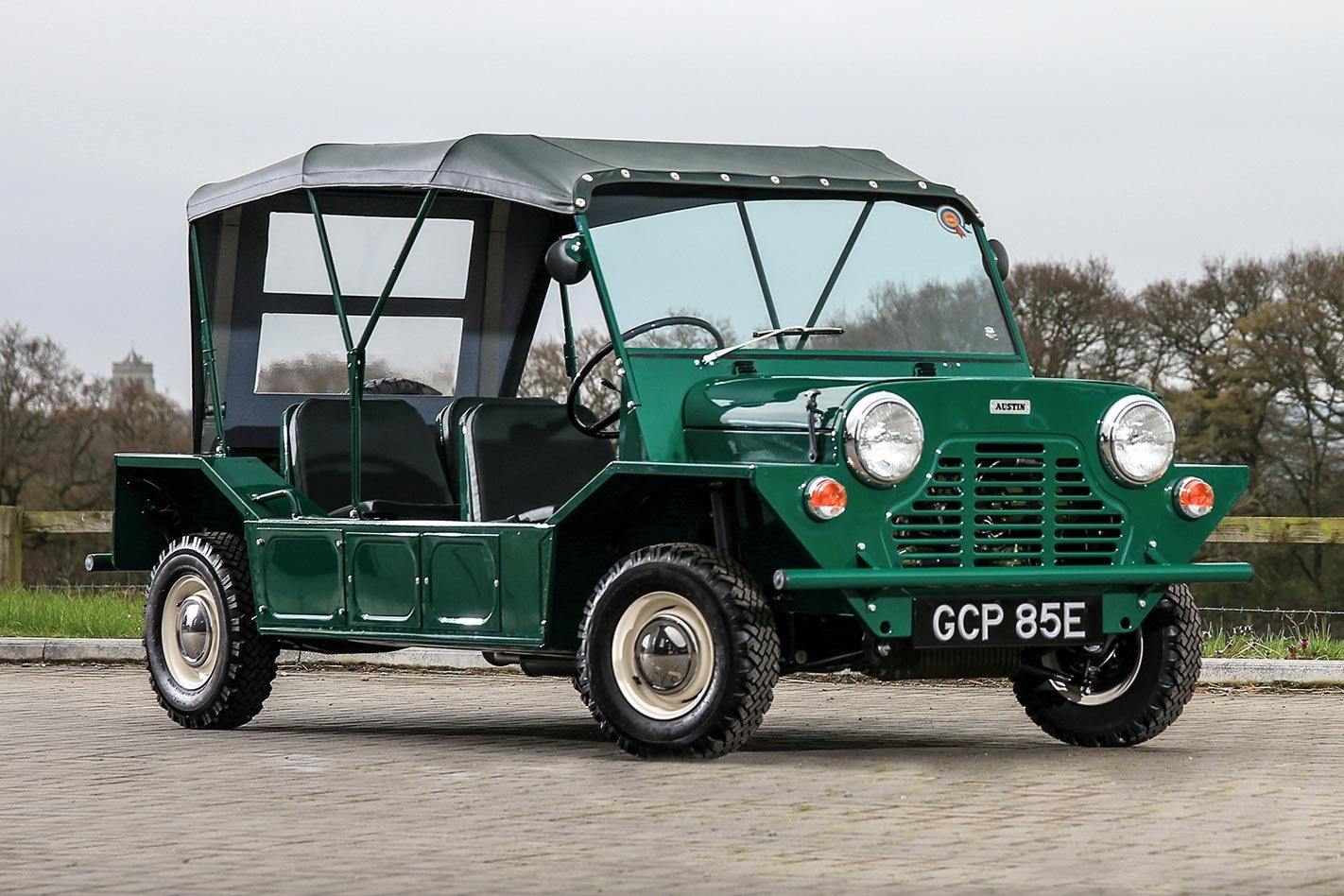Sir Alec Issigonis gets endless love for the Mini, the tiny sedan with a wheel at each corner that he created in 1959. Often overlooked (easily done, if the windscreen’s folded) is the sister car that Issigonis himself designed immediately after as a light off-road personnel carrier.
‘Light’ is the operative word. Issigonis’s Mini Moke amounted to an open body of steel box sections, braced by front and rear bulkheads, and a cross-brace supporting the front seats. The hollow side pontoons served as panniers for small luggage, tools, battery and the petrol tank. A folding fabric roof was provided, with no side screens.
Mounted on conventional Mini front and rear subframes, with rubber-cone suspension, 10-inch wheels and a 2032mm wheelbase, the 848cc BMC A-series-powered Moke weighed just 534kg – around 50kg less than a base Mini Mk1.

Issigonis’s intention was that the Moke could be stacked two-high for transport by air; it could be dropped by parachute; and its steel-tube bumpers would enable burly soldiers to lift it out of bogs.
Unfortunately, military tests in 1960 proved there’d be rather too much of the latter, due to the Moke’s meagre ground clearance. Over the next few years, prototypes were tried on a shorter wheelbase and even with twin engines and 4WD.
While the military never bit, the Moke – British slang for a donkey – was launched to the public in 1964. British production ceased (after about 15,000 units) in 1968, but in the meantime, Australian assembly had commenced in Sydney in 1966, followed by full manufacturing in 1968.
In 1967, a Mini Moke became the first and only car on Pitcairn Island.

The Aussies made Moke magic in 1969, switching to 13-inch wheels to enhance ground clearance and useability. This also brought wider tracks (and 40mm wider guards), a restricted steering rack and modified rear suspension. Engine capacity would peak at 1275cc for the Californian of 1977-82.
Developed for export, the Californian copped front discs and a package of spoked 13×5.5-inch Sunraysia wheels, front and rear push bars and roll cage. Denim-look seats and hood were optional.
Production ceased in mid-1982. It’s reckoned around 38,630 Aussie Mokes were made, including nearly 4000 CKD-assembled, 10-inch-wheel UK models. Export markets included South Vietnam, NZ, Nigeria and Hong Kong.

Pick of the crop
Aussie Mokes were similar but superior to the early UK model shown, adding 13-inch wheels, wider guards with rubber spats, and side wind-deflector screens. Post-1977 cars had a removable grille, and bodies built after November ’79 were galvanised. High-backed ‘tombstone’ seats came later, as did inertia-reel lap-sash belts permitted by the roll cage.

It grows on you
The Moke’s 848cc BMC A-series engine evolved through 998cc, 1098cc and 1275cc, all directly Mini-derived and with a four-speed manual ’box. The 998 claimed 29kW/68Nm and 0-100km/h in just under 24sec. The 1275, with 1.5-inch SU carb, upped the ante to 40kW at 4250rpm and 90Nm at 2500rpm, and 0-100km/h in a still-soporific 20.3sec.





